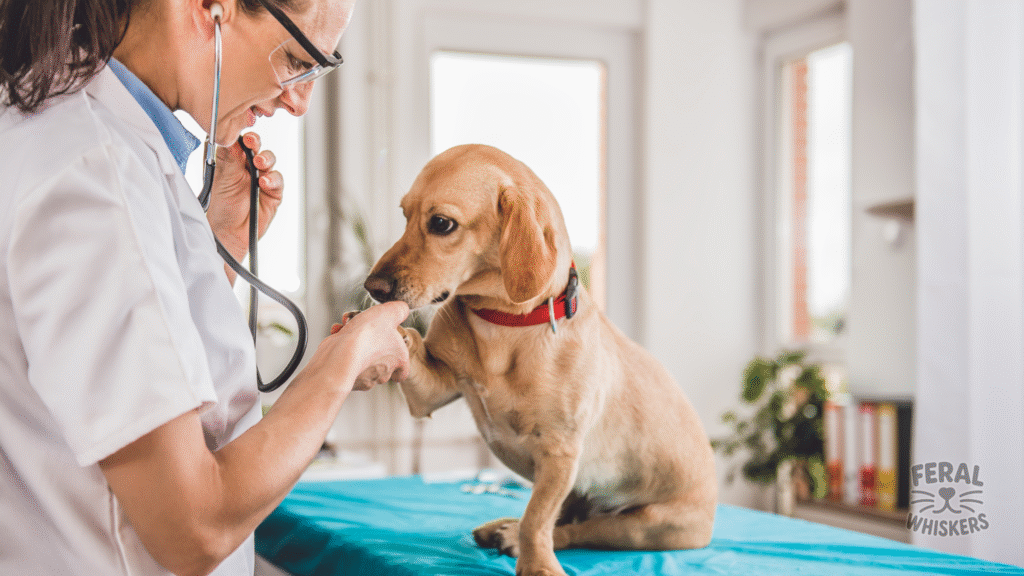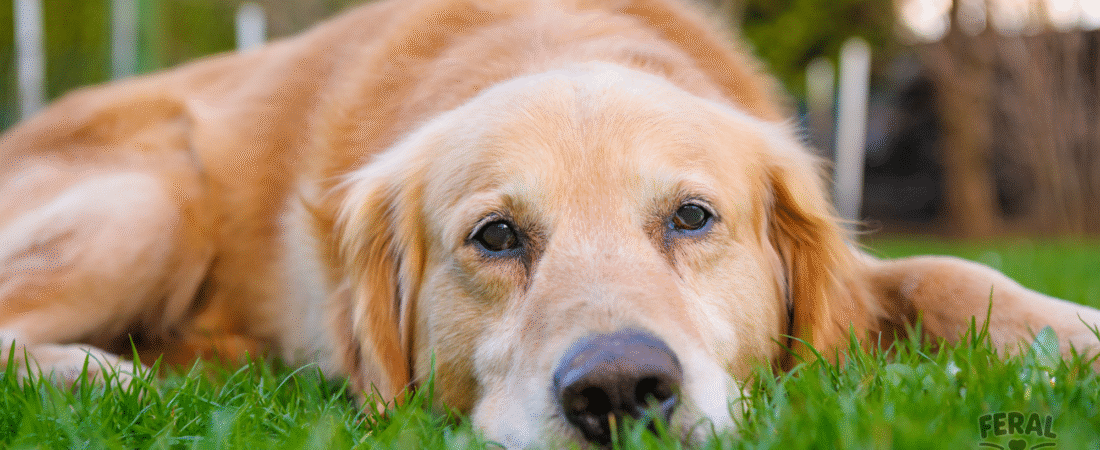What Dog Parents Should Know About Canine Flu

Canine influenza, commonly called dog flu, is a highly contagious respiratory infection caused by two main strains of influenza virus:
- H3N8 — first seen in racing greyhounds in Florida in 2004.
- H3N2 — identified in Chicago in 2015, linked to an outbreak from Asia.
Unlike human flu, canine influenza isn’t seasonal — outbreaks can occur any time of year.
Most dogs recover, but puppies, seniors, and dogs with weakened immune systems are at risk for severe illness, including pneumonia.
How Canine Flu Spreads
Very similar to kennel cough, the dog flu spreads by:
- Aerosolized droplets from coughing, sneezing, or barking.
- Direct contact with sick dogs.
- Contaminated items like bowls, toys, shared water, or hands/clothing.
The virus can survive:
- Up to 48 hours on surfaces.
- 24 hours on clothing.
- 12 hours on human hands.
This is why it moves so rapidly in kennels, shelters, and boarding facilities.
Symptoms to Watch For
- Persistent cough (dry or moist)
- Sneezing and runny nose
- Watery eyes with discharge
- Fever (often high — 103–105°F)
- Lethargy and reduced appetite
- Some dogs may develop pneumonia (serious cases)
👉 About 1 in 5 dogs with flu show no symptoms at all but can still spread it to others!
Diagnosis
Your vet may diagnose with:
- History of exposure to other coughing dogs.
- Clinical signs (respiratory illness).
- Specific lab tests on swabs for definitive diagnosis.
Treatment
There is no medicine that kills canine flu directly — treatment focuses on supportive care, similar to human flu.
- Fluids (oral or IV) to prevent dehydration.
- Rest and isolation for 2–3 weeks.
- Medications for fever, cough, or secondary bacterial infections.
- In severe cases, oxygen therapy or hospitalization may be required.
Home Care for Flu Dogs
Care Checklist:
- Isolate your dog from all others until cleared by the vet.
- Provide a well‑ventilated, quiet space to rest.
- Keep bowls separate — wash often with soap and hot water.
- Wash your hands and change clothes before touching healthy pets.
- Run a humidifier or vaporizer to help soothe irritated airways.
- Track food intake — call your vet if your dog refuses meals.
- Monitor for warning signs of pneumonia: rapid breathing, high fever, blue gums, or extreme lethargy.
Prevention
- Vaccines exist for both H3N8 and H3N2 strains. In many regions, combination vaccines are available. While not 100% protective, they reduce severity and spread.
- Good hygiene in kennels, daycares, and grooming shops is key.
- Avoid high‑risk places during outbreaks (check news or your vet’s alerts).
- Disinfect clothing and hands after contact with other dogs before touching your own.
Expectations and Long-Term Effects
- Most dogs recover fully in 2–3 weeks.
- Death rates are low (~1–5%), but complications like pneumonia can raise that risk, especially in puppies and seniors.
- Unlike distemper, canine flu rarely leaves long‑lasting effects — once recovered, dogs usually return to normal.
Facts
- The canine flu virus originally came from horse and bird flu strains that jumped species.
- Both strains (H3N8 and H3N2) continue to circulate in the U.S.
- Dog flu is not currently considered a human health risk — but close monitoring continues in case of future viral mutations.
Common Questions
Is dog flu the same as kennel cough?
No — they have similar symptoms, but influenza is caused by a virus while kennel cough can involve viruses and bacteria.
Can my dog catch human flu?
No, human flu viruses don’t infect dogs (and vice versa).
Do dogs with flu always cough?
Coughing is the most common sign, but some dogs only have fever, lethargy, or nasal discharge.
Should my dog get the flu vaccine?
If your dog goes to daycare, boarding, grooming, training classes, or lives in an outbreak area, most vets recommend it.
Final Takeaway
Canine influenza is a contagious respiratory disease that is uncomfortable for most dogs and dangerous for some. While most furry friends recover fully with rest and supportive care, the virus spreads very easily anywhere dogs gather.
Vaccinating high‑risk dogs, disinfecting after exposure, and isolating sick pets are the best ways to keep this virus under control. Prevention and awareness are always easier than managing an outbreak at home.

